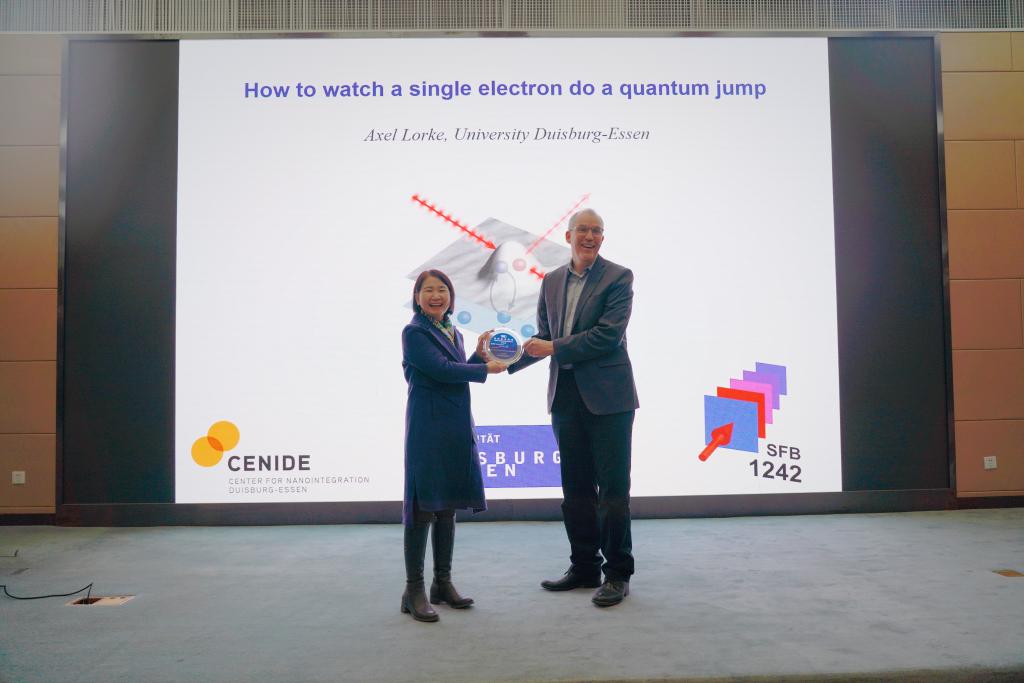On the morning of December 6, 2023, Prof. Axel Lorke from the University of Duisburg-Essen, visited the Wuhan National Laboratory for Optoelectronics. During this event, Prof. Lorke performed as a guest at the 200th Wuhan Optoelectronics Forum and gave a report titled How to Watch a Single Electron Do a Quantum Jump.
Initially, Prof. Wang Kai gave an introduction to Prof. Lorke, covering his research direction, academic contributions and representative scientific research results. Subsequently, Prof. Zhu Dan, deputy director of Wuhan National Laboratory for Optoelectronics, presented Prof. Lorke with a forum medal, marking the official commencement of the report.

During the lecture, Prof. Lorke reviewed the atomic-like structure and fundamental quantum properties of self-assembled quantum dots. He also presented the latest advancements in studying the non-equilibrium dynamics of injected excited electron states. By combining spectroscopy and transport spectroscopy methods, he demonstrated how optical methods can be used to "observe" individual electrons undergoing independent quantum tunneling events in single quantum dots. Furthermore, he revealed their equilibrium and non-equilibrium characteristics by statistically evaluating the resulting random telegraph signals.

The lecture attracted many researchers, scholars, and students, providing them with an opportunity to gain insights and engage in discussions regarding the forefront of quantum physics research.
Prof. Axel Lorke is the Chair for Solid-State Physics and Professor for Experimental Physics, Department of Physics at the University of Duisburg-Essen. He graduated with a PhD in 1991 from the University of Hamburg and the University of Munich. From 1991 to 1993, he conducted postdoctoral research at the University of Tokyo and the University of California, Santa Barbara. His main research interests include low-dimensional materials and devices, nanoparticles, diamond and carbon-based materials, optical, THz, and transport spectroscopy, as well as self-organized quantum dots. He has published SCI papers in journals such as Nature, Phys. Rev. Lett., Nature Commun. etc.